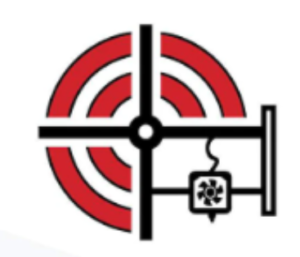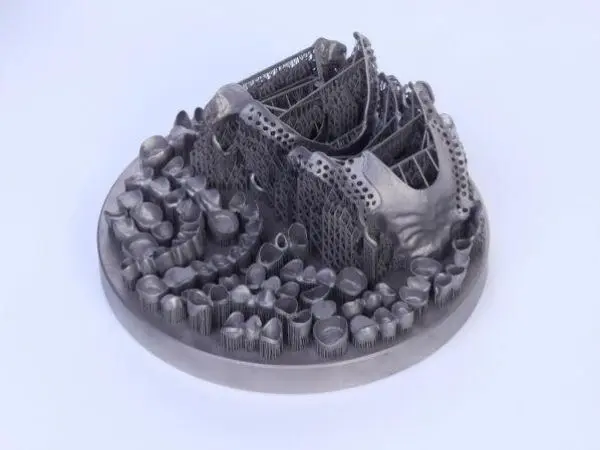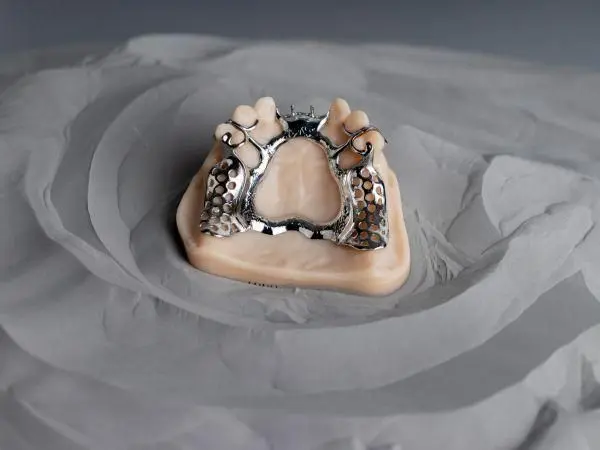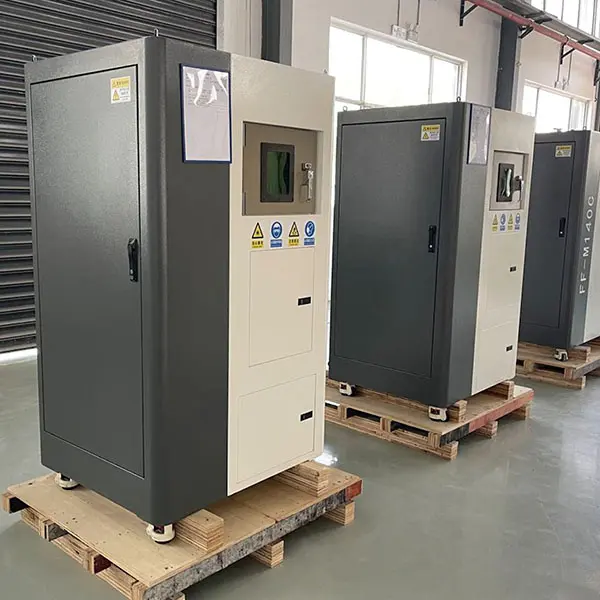We’ve been fascinated by the idea of Push Button Metal for a few years. Rather than a $1 million machine that needs lots of stations and preparation, affordable, easy-to-use metal machines could find a home in hundreds of thousands of machine shops, factories, and companies around the world. Lower-cost Chinese machines led the way. Then, we wrote in 2021 how Xact Metal, One Click Metal, and Meltio showed us that value-engineered machines for around $100,000 to $150,000 could compete with the likes of Farsoon, EPlus, and BLT’s entry-level offerings. What’s more, through canisters, integrated powder management, and software, these Push Button Metal machines could be easier to install and use. All the while, there was an even more compelling value proposition in Xact Metal’s $65,000 XM200C. At that price point, we don’t have to sell to the industrial giants of the world, or even a well-to-do machine shop; at around $50,000, many businesses can afford to buy or lease an LPBF machine. But Chinese firm FastForm promises something even more extraordinary.
A Future Foretold
In April, we wrote about Riton Lab, FastForm, Phrozen, 2OneLab, and others making $50,000 LPBF machines. Often benchtop and focusing on dental, these things are wonders in value engineering, and an entirely new market segment. Most of the traditional vendors see the quad laser 300 machines as somewhat of a fallow ground, and can’t conceive of selling a $200,000 machine in their cost structure. A $50,000 LPBF machine? Impossible. We all know, of course, that if these low-cost guys get the volume and manage to make safe, reliable systems, eventually they’ll annihilate the entry-level offerings of HBD, BLT, and the rest, forcing them to go into larger, more productive markets for aerospace and defense in China. A growing industry for sure, but one that will see a few players prosper. Meanwhile for the Chinese players, they hope to have enough of an installed base worldwide in general industrial manufacturing, bikes, and such, to stave off the lower cost guys with productivity gains. EOS and SLM then hope to be firmly nestled in the bosoms of BMW, Airbus, and Raytheon, where their large-format systems make critical defense components. Hopefully then, some of the One Clicks of the world would, akin to Formlabs, have perhaps a more expensive unit, but one that works easily all the time, to find growth in the enterprise and design-oriented manufacturing locations worldwide. Obviously then, FastForm will become the largest revenue LPBF firm worldwide, commoditizing LPBF and bringing benchtop metal printing to any workshop worldwide that has a VMC or similar. Feel free to shoot me an email from 2035, but I think a lot of us assume that this is what will happen.
A Happy Island
This is not meant to be provocative, one of those scared straight, kick you in the pants kind of things; this is just the most logical, straightforward development that we’ve seen happen again and again. Yes, we still have Rolls-Royce, and everyone thinks they’re great, but BMW owns them because they found out how to eliminate the coachbuilders and make more efficient engines. And Toyota is much bigger because they industrialized efficiency and started making reliable devices that work well all the time. And some Chinese company with an indecipherable logo is looking to displace all of them right now, thanks to electrification. The issue for the large Chinese players that are in danger of being displaced is that their cost structures and conception of what a metal 3D printer is will preclude them from making the tough decisions to see off low-cost competition. They and the large European players will desperately scramble for a moat and find themselves at the mercy of two dozen companies. Ask your local contract manufacturer if that is an amazing place to be. Furthermore, if we look at TRUMPF, DMG Mori, and the like, growth is staid but cyclical. That’s fine in the period from 1800 to 1970. But, since then, wild swings in markets, interest rates, and global politics have made a lot of firms afraid of significant CAPEX. Since COVID and the global upheavals since then, some companies have become permanently afraid and generally reticent to make big decisions. The threat of sudden and irrational tariffs has made things worse. Does that sound like a market into which you want to sell a $5 million machine tool? Simultaneously, a slowdown in Western machine tool sales may just be permanent, with a cyclical uptick perhaps looking more towards China for many new machines. I’d think twice before marooning myself on that happy island.
Trumpfed
The day that the German machine tool industry died was the 14th of May 2021. And it wasn’t the Chinese that won, but rather the Germans that decided to throw in the towel before the battle had fully commenced. On that day, TRUMPF, a family-owned, multi-billion dollar revenue machine tool and laser company, sold a controlling stake in One Click Metal to INDEX. The one company that could have had the vision and staying power in additive, chickened out of its own future. That one company, looking to automate a lot of manufacturing, stopped believing that it could automate manufacturing enough to make $100,000 machine tools in Germany. May 14th, 2021, may well go down as TRUMPF Day, when Germany’s machine tool industry surrendered its chance to lead in additive manufacturing.
FastForm
Earlier this month, a remarkable, very solid, very ambitious company that many people have never heard of made an announcement. It was overlooked by almost everyone. According to Crunchbase, FastForm, a maker of affordable benchtop LPBF equipment, received about $13 million in Series A funding. Previously, the firm got a $700,000 angel round in 2017 and another $13 million in 2024. Investors have included Suzhou Yongxin Fangzhou, Walden International, and Shanghai Jinpu Kunwen Investment Management. FastForm is also known as Meiguang (Jiangsu) 3D Technology Co., Ltd. At one point, it was also known as Micron Speedmap, Micron (Jiangsu) 3D Technology Co., Micron 3D, Dalian FASTFORM Technology Co., and Meiguang Speedmaster. This naming confusion is a big reason why the firm has not been widely known. Founded by Li Shuai and Chen Zhichao in 2016, the company first made mid-market systems. The founders were Additive Manufacturing PhDs and had worked for HG Tech, a spin-out of Huazhong University of Science and Technology (HUST). Wuhan-based HG Tech has become a leader in laser cutting, laser marking, PCB marking, and more.
FastForm exports to 50 countries and has over 300 clients. The firm has engineered its way around some key patents and focuses on dental machines, consumer electronics, and shoe molds now. It has its own software and sells entry-level machines that are familiar to us. But, small benchtop units that sometimes measure 80 by 65 centimeters in height come with a 300W laser and can print CoCr, titanium, stainless steel, copper, and aluminum. Systems range from about $40,000 to $200,000, but as a Chinese firm, it also has a rendering of at least some mega eight-laser system. Incredibly, the company says on its site that the pricing for its desktop X1 unit starts at $14,000, whereas more generally it has stated that the printer starts at $25,000, which I can also scarcely believe. Other low-cost units are priced at a more reasonable-seeming $40,000 and $50,000.
The company also supplies ovens for drying powder, furnaces for heat treatment, a saw to remove builds, a vacuum cleaner, and a sand blasting cabinet. Some of its systems have been optimized to fit on a pallet and easily get through doors. Some were designed to run with two galvonometers The company says of its entry level systems, “Compared with those heavy-duty equipments costing hundreds of thousands of yuan, DeskFab X1 is in no way inferior in printing quality. Buying it means you can drive a Ferrari with the budget of Wuling,” referring to a low-cost Chinese car brand that makes vans and the like. The systems come with smart features such as improved layer times, reduced consumables needs, and super short production runs optimized for dental crowns.
Up until 2024, FastForm had sold 500 units since 2016. But it was recently announced that,
“FastForm shipped nearly 1,000 SLM metal 3D printers globally in the first half of 2025, maintaining a leading position in the industry. The company plans to deliver over 10,000 units in the next three years.”
This is a remarkable achievement. If these sales were all from the X1 and it really is only $25,000, and assuming that some people buy some ancillary equipment from them, the company may have done around $30 million in revenue for the first half of this year. If we include more processing equipment sales, or assume that people also buy more expensive equipment from them, that figure could be doubled.
Now, can it really be possible to make a $25,000 LPBF machine? I don’t know. But, with good galvo connections and laser volume, you could make a cheap LPBF machine. I’m just not sure it can be safe at that cost. Also, the constant name changes and relocations of this firm are a bit worrying in that they seem to be jockeying for local money each time. Having said that, the claimed revenue and revenue growth is remarkable. If the company’s claims are true, and it continues to supply super low-cost LPBF systems, then it could show rapid growth. That rapid growth and value engineering could really see the firm push up against low-cost Chinese suppliers and displace other low-cost LPBF vendors. A truly low-cost solution, if possible, would really necessitate our recalibration of what is possible in additive.
Subscribe to Our Email Newsletter
Stay up-to-date on all the latest news from the 3D printing industry and receive information and offers from third party vendors.









